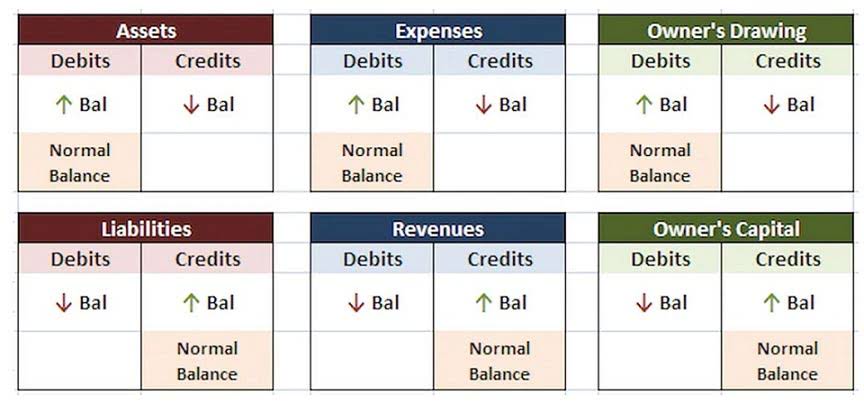Content
- Difference Between Vertical Analysis And Horizontal Analysis
- The Difference Between Vertical Analysis And Horizontal Analysis
- Difference Between Ceramic And Porcelain Tile
- Popular Differences
- How Is Horizontal Analysis Performed?
- Financial Analysis: Horizontal And Vertical Analysis
- Vertical Analysis Of Balance Sheet
- How To Create A Horizontal Company Financial Statement Analysis
- Example Of Vertical Analysis Of An Income Statement

When a company releases these types of financial statements with vertical analysis, they are often referred to as common-size financial statements. Using vertical analysis, every line item on a financial statement is stated as a percentage of a base figure on the statement. Horizontal analysis can thus give an insight into horizontal and vertical analysis how a company is growing. It helps identifying growth trends as well as can indicate how efficiently the business is managing its expenses over the years. It can be manipulated by keeping a very weak performance year as the base year, making performance of other comparison years look more attractive than they actually are.
Often expressed in percentages or monetary terms, it provides insights into factors that significantly affect the profitability of an organization. For instance, in the year 2015, organization A had 4 million turnover as compared to year the 2014 whereby the turnover was 2 million. The 2 million increase in turnover is a positive indication in terms of performance with a 50% increase from the year 2014. For a better picture of performance, the analysis should be expressed as a percentage as opposed to currency.
We will use the sales growth approach across segments to derive the forecasts. Write the difference between comparative analysis and common size analysis. With financial analysis, financial institutions and loan agencies decide if a loan can https://www.bookstime.com/ be provided to the company or not. It helps them to determine the credit risk, deciding the terms and conditions of a loan, interest rate, etc. The top management of any organization is concerned with the future prospects of the company.
Horizontal and vertical analysis are two main types of analysis methods used for this purpose. Vertical analysis is an analysis method that depicts the relationship that exists among each line of a financial statement using a base amount in the same period. Vertical analysis is used to compute percentages, which allows users to evaluate a business entity’s performance and provide comparison among competitors. Reporting each line item of the financial statement as a percentage makes it easier to compare previous performance and performance between organizations.
This can be paired with horizontal analysis to help you recognise trends and maximise profits through efficient, data-based strategies. It helps investors analyze and ascertain whether the company has had consistent growth over the years and if they are utilizing fund available in a balanced way.
Calculate the percentage change by first dividing the dollar change between the comparison year and the base year by the line item value in the base year, then multiplying the quotient by 100. Horizontal analysis allows financial statement users to easily spot trends and growth patterns. This method of analysis helps to identify correlations between line items and how they impact overall performance. Similar comparative statements are typically drawn out for income statement and cash flow statement as well to give a complete picture. Note that the line-items are a condensed Balance Sheet and that the amounts are shown as dollar amounts and as percentages and the first year is established as a baseline. Ratio Analysis – analyzes relationships between line items based on a company’s financial information.
- Unlike Horizontal Analysis, a Vertical Analysis is confined within one year ; so we only need one period of data to derived the percentages and completed the analysis.
- In this analysis, the very first year is considered as the base year and the entities on the statement for the subsequent period are compared with those of the entities on the statement of the base period.
- On the other hand, vertical analysis is used in the comparison of a financial item as a percentage of the base figure, commonly total liabilities and assets.
- Consistency constraint here means that the same accounting methods and principles must be used each year since they remain constant over the years.
- To compete effectively and strategically, it’s important for businesses of all sizes to make use of the tools at their disposal.
On the other hand, in vertical financial analysis, an item of the financial statement is compared with the common item of the same accounting period. To make the best use of your financial data, you need a robust toolkit with plenty of options for slicing and dicing information in meaningful ways. Like horizontal analysis, vertical analysis is used to mine useful insights from your financial statements.
Difference Between Vertical Analysis And Horizontal Analysis
In this analysis, the very first year is considered as the base year and the entities on the statement for the subsequent period are compared with those of the entities on the statement of the base period. The changes are depicted both in absolute figures and in percentage terms.
Reviewing these comparisons allows management and accounting staff at the company to isolate the reasons and take action to fix the problem. A good way to do some ratio and trend analysis work is to prepare both horizontal and vertical analyses of the income statement. Both analyses involve comparing income statement accounts to each other in dollars and in percentages. To increase the effectiveness of vertical analysis, multiple year’s statements or reports can be compared, and comparative analysis of statements can be done. Horizontal analysis and vertical analysis are two of the three primary methods used to analyze financial statements.
The Difference Between Vertical Analysis And Horizontal Analysis
‘ FP&A solution is an advanced financial planning and analysis software for Excel users who wish to benefit from financial automation. Regardless of the budgeting approach your organization adopts, it requires big data to ensure accuracy, timely execution, and of course, monitoring. Financial Modeling And ForecastingFinancial modeling refers to the use of excel-based models to reflect a company’s projected financial performance. Past performance is analysed by conducting a review of the trend of past sales, profitability, cash flows, operating expenses, etc. Each item on the statement is presented as a percentage of the base amount. That means the variable expenses in the balance sheet of year 2 and 3 are shown as a percentage of variable expenses of year 1. Let us assume that variable expenses on year 1, 2, and 3 were $151, $147, and $142 respectively.
- This method of analysis helps to identify correlations between line items and how they impact overall performance.
- Analysis helps in knowing the earning capacity and operating performance of the company.
- You figured that the engine cost $5,000, you can say that it cost you 10% of the total amount.
- On the other hand, horizontal analysis looks at amounts from the financial statements over a horizon of many years.
- When a company releases these types of financial statements with vertical analysis, they are often referred to as common-size financial statements.
Form the table above we can understand that there was no change in the share capital but the reserve and surplus was increased by 44%. Other liabilities increased by 38%, liquidity increased by 18%, investment, net fixed asset and other assets by 18%, 56% and 15% respectively. Horizontal analysis is the comparison of historical financial information over a series of reporting periods, or of the ratios derived from this financial information. The intent is to see if any numbers are unusually high or low in comparison to the information for bracketing periods, which may then trigger a detailed investigation of the reason for the difference. The following analysis shows that the portion of the cost of sales has increased by over 4% comparing the records of 2017 and 2016.
Difference Between Ceramic And Porcelain Tile
The horizontal analysis as the name suggest is the analysis done on horizontal basis for the same item of a company’s financial statements generally for two or more years. It analyses the trend of the company by calculating the change percentage between the same line item for various years. On the other hand the vertical analysis is done by comparing the line items vertically in a financial statement with the total of either sales or assets . This is done for single year, analyses the changes over time and the effect of one line item to another as well as to the base amount . Horizontal analysis, or trend analysis, is a method where financial statements are compared to reveal financial performance over a specific period of time. Horizontal analysis, also known as trend analysis, is used to spot financial trends over a specific number of accounting periods. Horizontal analysis can be used with an income statement or a balance sheet.
They do this to see whether there is an improvement or a decline as far as the performance of the company is concerned. Horizontal analysis just compares the trend of the item over many periods by comparing the change in amounts in the statement. The vertical analysis shows the relative sizes of the accounts present within the financial statement. Vertical analysis restates each amount in the income statement as a percentage of sales. Horizontal analysis is used to indicate changes in financial performance between two comparable financial quarters including quarters, months or years.

With financial analysis, investment alternatives can be reviewed to judge the earning potential of the enterprise. Another objective is to examine the present profitability and operational efficiency of the enterprise to determine the financial health of the company.
Popular Differences
For example, by showing the various expense line items in the income statement as a percentage of sales, one can see how these are contributing to profit margins and whether profitability is improving over time. It thus becomes easier to compare the profitability of a company with its peers. Vertical analysis looks at each line item in a company’s financial statements by their relative size in the same period. When using vertical analysis in a financial statement, the base figures will be shown, and then the percentages for each line item will be displayed in a separate column.
Financial statements are the window to a business entity’s financial performance and health. Various stakeholders such as shareholders, investors, creditors, banks etc. assess and analyze the financial statements. This analysis helps them gauge various aspects of the entity’s financial health which then forms the basis for their decision making. Merely analyzing financial statements in isolation may not be sufficient for this purpose. They may need to be compared with financial statements of previous years or with those of other comparable entities to be more meaningful. Such a technique also helps identify where the company has put the resources. And, in what proportions have those resources been distributed among the balance sheet and income statement accounts.
How Is Horizontal Analysis Performed?
On the other hand, comparability constraint dictates that a company’s financial statements and other documentation be such that they can be evaluated against other similar companies within the same industry. Horizontal analysis is used to improve and enhance these constraints during financial reporting. Consistency constraint here means that the same accounting methods and principles must be used each year since they remain constant over the years. For a horizontal analysis, you compare like accounts to each other over periods of time — for example, accounts receivable (A/R) in 2014 to A/R in 2015. The Comparative Income Statement is drawn on the same principle as the Horizontal Balance Sheet.
It uses a base figure for comparison and works out each transaction recorded in your books as a percentage of that figure. This helps you compare transactions to one another while also understanding each transaction in relation to the bigger picture, rather than simply in isolation. Vertical analysis in accounting is sometimes used in conjunction with horizontal analysis to get a broader view of your company accounts. Horizontal AnalysisHorizontal analysis interprets the change in financial statements over two or more accounting periods based on the historical data. It denotes the percentage change in the same line item of the next accounting period compared to the value of the baseline accounting period.
From this, it is able to determine how the efficiency of the company in terms of performance. In other words, it gives the management a benchmark of how future performance should be and the necessary changes required in the future. Through horizontal analysis of financial statements, you would be able to see two actual data for consecutive years and would be able to compare every item. One tool used in horizontal analysis is the financial ratios which is useful to gauge the trend and direction over a period.
But, it can’t really answer “Why.” Like, in the above example we know cost is a major reason for the drop in the profits. But, we can’t be sure if the costs have actually risen or the management has cut the prices of the product. Horizontal analysis is an approach used to analyze financial statements by comparing specific financial information for a certain accounting period with information from other periods. To prepare a vertical analysis, you select an account of interest and express other balance sheet accounts as a percentage. For example, you may show merchandise inventory or accounts receivable as a percentage of total assets. From the above calculation, we can see that the account payables, total current liabilities, common stock, total current assets, cash has increased in the year 2017 while long-term debt and net fixed assets has decreased. The significant increase in cash is due to the collection of account receivable, issue of common stock, sale of goods and fixed assets.

No two companies are the same, and this analysis shows only a very small piece of the overall pie when determining whether a company is a good buy, or not. Trends in gross margin generally reveal how much pricing power a company has.
Vertical Analysis Of Balance Sheet
If you’d rather see both variances and percentages, you can add columns in order to display changes in both. While this format takes the most time to create, it also makes it easier to spot trends and better analyze business performance. How detailed your initial financial statements are depends largely on the accounting software application you’re using.
With the help of this analysis, the percentages so computed can be directly compared with the result of the equivalent percentages of the past years or other companies operating in the same industry, irrespective of their size. So, common size financial statement not only helps in intra-firm comparison but also in inter-firm comparison. Further analysis via horizontal analysis will likely be required to unlock those insights, and make use of them in a strategic way. Vertical analysis makes it much easier to compare the financial statements of one company with another, and across industries. This is because one can see the relative proportions of account balances. Horizontal analysis typically shows the changes from the base period in dollar and percentage. For example, a statement that says revenues have increased by 10% this past quarter is based on horizontal analysis.
Example Of Vertical Analysis Of An Income Statement
Now we can assume a sales growth percentage based on the historical trends and project the revenues under each segment. Therefore, total net sales are the Oral, Personal & Home Care, andPet Nutrition Segment. In this GKSR example above, we can identify the YoY growth rate using a horizontal income statement analysis.